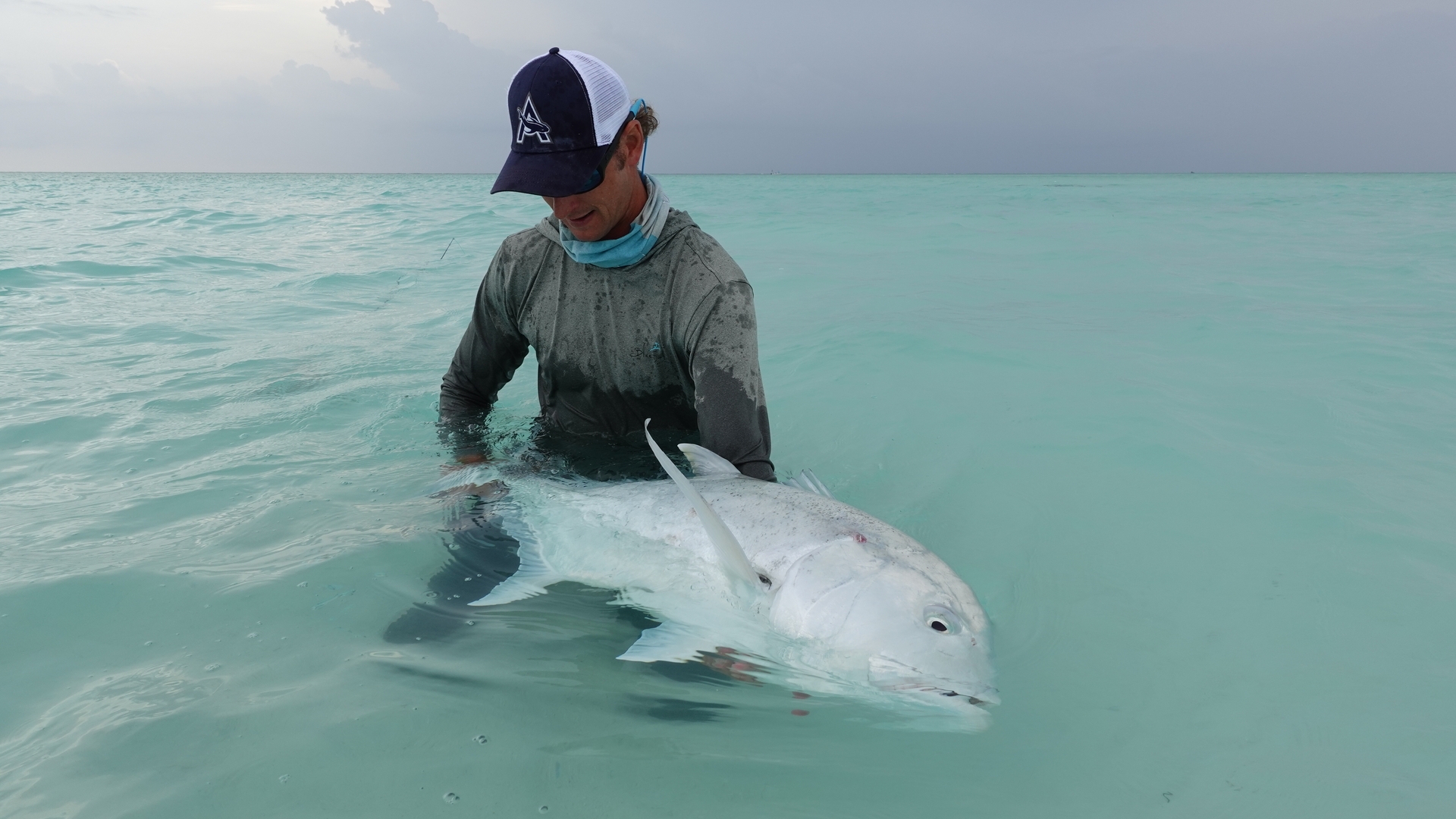We reach more than 65,000 registered users in Dec!! Register Now

Uncovering Hidden Consequences of Catch-and-Release Sport Fishing
- January 15, 2025
- 1 Views
- 0 Likes
- 0 Comment
UMass Amherst leads first study to examine effect of a temporary halt in sportfishing, shows that giant trevally fishery in Seychelles is sensitive to angling pressure — despite being catch-and-release
In an effort to conserve sensitive species of fish, some sport fishing is entirely catch-and-release, meaning that the fish are returned to the water once brought ashore. However, too much fishing may affect the behavior of the target species and the sustainability of the fishery. Now, for the first time, an international team of biologists co-led by the University of Massachusetts Amherst and University of South Florida, conservationists and industry partners in Seychelles, has tested whether this is indeed the case. In a paper recently published in the journal Canadian Journal of Fisheries and Aquatic Sciences, the team shows that a coveted sport-fishing species, the giant trevally, can be sensitive to too much fishing pressure. This result comes from a “natural experiment” presented by the COVID-era closure of the fishery and has widespread management implications for the species throughout its range in the Indian and Pacific oceans.
“A few years ago, both the Island Conservation Society, which promotes conservation in the Seychelles Islands, and the Alphonse Fishing Company, (now known as Blue Safari Seychelles Fly Fishing) a flyfishing guide service located in the Seychelles, approached my group concerned about the sustainability of sportfishing in the Seychelles,” says Andy Danylchuk, professor of fish conservation at UMass Amherst and the paper’s senior author. “It was the perfect convergence of a research question that my team cares deeply about — how recreational fishing can be a sustainable part of the ‘blue economy’— brought to us by stakeholders looking to implement policies and management guided by science.”
Researchers partnered with conservationists and industry partners in order to better manage the sought-after game fish. Video credit: Alphonse Fishing Company (now Blue Safari Seychelles Fly Fishing)
As opposed to harvest-orientated recreational fishing whose effects can be more easily gauged in terms of population numbers, catch-and-release should theoretically result in less mortality, meaning there should be more fish in the water for the anglers who are eager to catch them.However, there are a host of unintended consequences that may be associated with catch-and-release, which can be difficult to quantify. These include increased mortality from hooking a fish in critical locations, such as the gills, post-release predation, altered movements and “hook shyness,” which occurs when some fish in a population are so used to being targeted that they no longer bite at the lures or flies anglers cast to them. Hook shyness can be especially concerning with a species like the giant trevally, a “bucket list” prized sport fish for many anglers who are willing to spend thousands of dollars on a once-in-a-lifetime trip to catch them. If catch rates decline because of hook shyness, anglers can become disappointed, which can ultimately affect the local tourist industry. In some locations, to protect against such a loss of income, local guides may resort to baiting the fish with chum in order to lure them closer to their paying customers — something that can exacerbate the problem of altering the behavior and movement patterns of giant trevally.

The first, published in Ocean and Coastal Management in 2021, charted out what the giant trevally fishery looked like and how the Island Conservation Society and Alphonse Fishing Company have successfully managed it. The second, published in Fisheries Research in 2022, showed that catch-and-release has a minimal impact on the short-term activity and survival rate of giant trevally. “Our most recent published paper pulls more of the pieces together to shed light on whether angler presence alters the behavior of giant trevally,” says Griffin.
To conduct their research, they relied on a combination of acoustic telemetry (where a transmitter is surgically implanted in the giant trevally and receivers are placed throughout the coastal environment to rack individual fish as they move), and a mark-and-recapture program (where the team worked with anglers to implant microchips similar to what you’d put in your pet cat or dog that could be used to record how many times, and in which locations, individual fish were caught).

The team found that, while giant trevally can adapt their behaviors and movement patterns to fishing pressures, they don’t react to short-term closures — even those as total as the one during COVID. Furthermore, their data shows that over time, giant trevally may indeed become hook shy, and they point to evidence that some groups of giant trevally have shifted their home ranges away from prime fishing spots. Conversely, the mark-and-recapture program is showing a considerable population size of giant trevally, and that new giant trevally may be entering the fishery which may offset any issues of hook shyness.
“We are part of the ecology of these fish,” says Griffin. “If we want to be catching more of them, we may need to consider limiting the number of anglers that target them in any given location.”
Funding for this research was provided by the Seychelles Conservation and Climate Adaptation Trust, the Alphonse Foundation and Bonefish & Tarpon Trust, while in-kind support was provided by Blue Safari Seychelles, Blue Safari Seychelles Fly Fishing (formerly Alphonse Fishing Company) the Islands Development Company, the Island Conservation Society, the Seychelles Fishing Authority, Patagonia Inc., Thomas & Thomas Fly Rods, Cortland Lines and Nautilus Reels.
List of Referenes
- Lucas P. Griffin, Pierre-André Adam, Gail Fordham, George Curd, Caitlin McGarigal, Christopher Narty, Josep Nogués, Keith Rose-Innes, Devan Vd Merwe, Sascha Clark Danylchuk, Steven J. Cooke, Andy J. Danylchuk. Cooperative monitoring program for a catch-and-release recreational fishery in the Alphonse Island group, Seychelles: From data deficiencies to the foundation for science and management.. Ocean & Coastal Management, 2021; 210: 105681 DOI: 10.1016/j.ocecoaman.2021.105681
Cite This Article as
No tags found for this post









